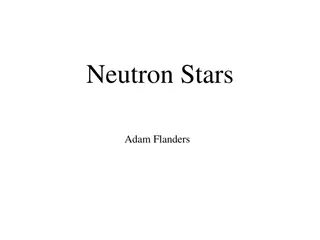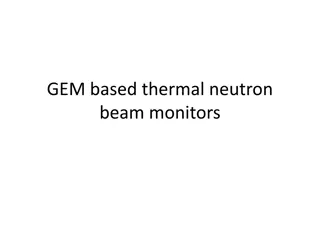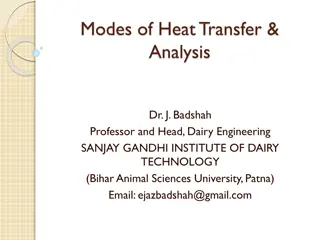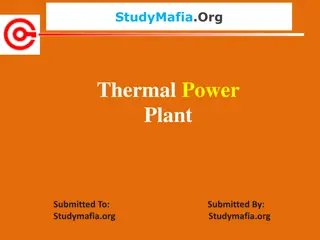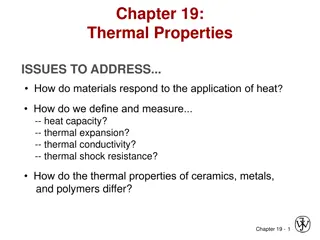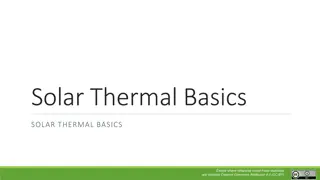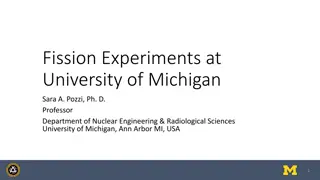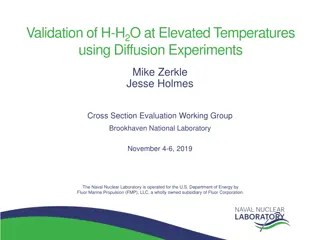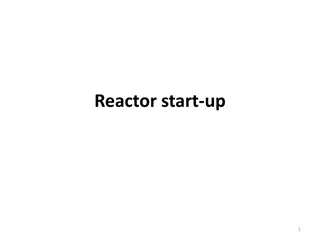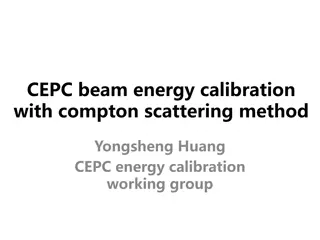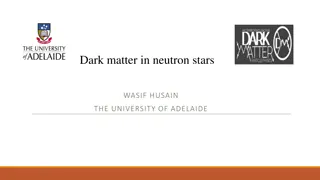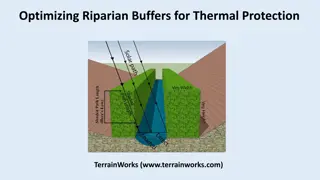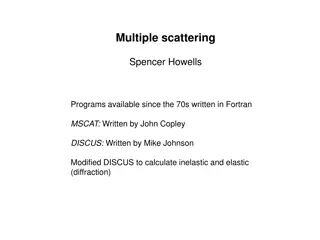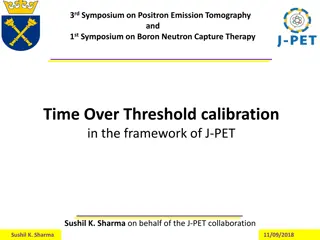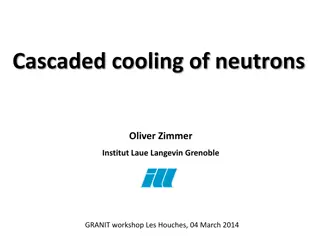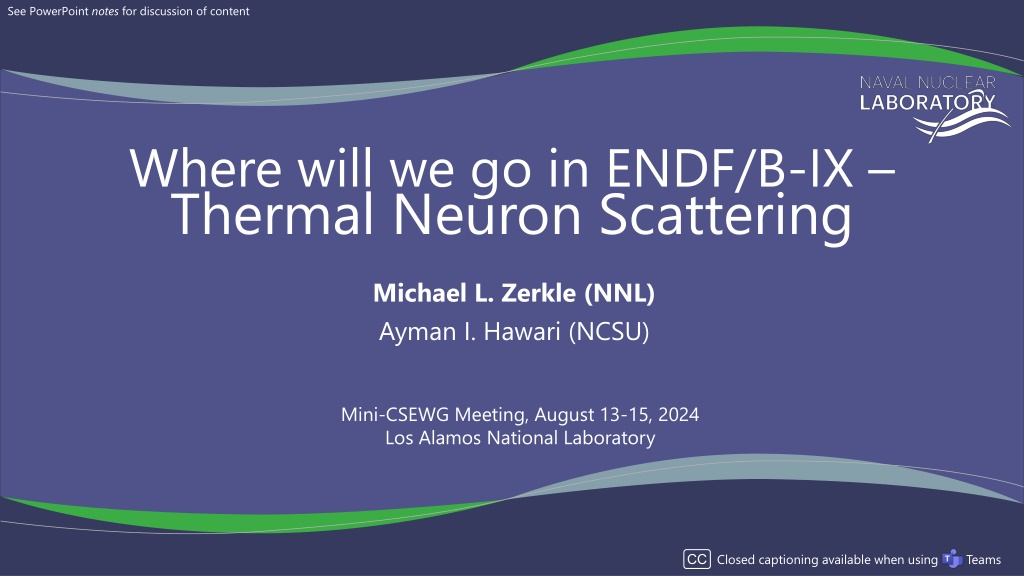
Enhancements for ENDF/B-IX Thermal Neutron Scattering
Explore the discussion topics and evaluations presented in the Mini-CSEWG Meeting for targeted strategic investments to prepare for ENDF/B-IX TSL validation. The session covers new/revised TSL evaluations, alternate enrichment treatments, and the need for thermal scattering laws for various fuel compounds to enhance nuclear criticality safety evaluations. It also includes plans for TSL validation, subthermal neutron transmission measurements, and additional capabilities for critical experiments. Stay informed and engaged with the latest developments in nuclear research.
Download Presentation

Please find below an Image/Link to download the presentation.
The content on the website is provided AS IS for your information and personal use only. It may not be sold, licensed, or shared on other websites without obtaining consent from the author. If you encounter any issues during the download, it is possible that the publisher has removed the file from their server.
You are allowed to download the files provided on this website for personal or commercial use, subject to the condition that they are used lawfully. All files are the property of their respective owners.
The content on the website is provided AS IS for your information and personal use only. It may not be sold, licensed, or shared on other websites without obtaining consent from the author.
E N D
Presentation Transcript
See PowerPoint notes for discussion of content Where will we go in ENDF/B-IX Thermal Neuron Scattering indico.bnl.gov indico.bnl.gov Michael L. Zerkle (NNL) Ayman I. Hawari (NCSU) Mini-CSEWG Meeting, August 13-15, 2024 Los Alamos National Laboratory Closed captioning available when using Teams
CLASSIFICATION HEADING Guided Discussion Topics New/revised TSL evaluations Areas ripe for targeted strategic investment to prepare for ENDF/B-IX TSL Validation Relaxing of physics approximations Alternate enrichment treatment for fuel compounds TSL Covariance Data Machine Learned TSL Kernels CLASSIFICATION HEADING
CLASSIFICATION HEADING New/Revised TSL Evaluations from NCSU (NCSP Appendix B) Polyethylene ((C2H4)n) Additional temperatures to support TEX-low temp Transportation analyses Uranium silicide (U3Si2) Paraffin (Wax) Light Paraffinic Oil (Mineral Oil) HEU/HALEU fuel materials U3O8 U-Mo Fissile Solutions Uranyl Fluoride (UO2F2) Uranyl Nitrate (UO2(NO3)2) Plutonium Nitrate (Pu(NO3)4) Light Paraffinic Oil (Mineral Oil) NCSU NCSU NCSU TSL evaluation. Mineral oil and other light paraffinic oils are moderators often found in fissile handling areas (FHAs). A thermal scattering law for light paraffinic oils would reduce excessing margins in nuclear criticality safety evaluations for fissile handling areas containing this class of moderator. TSL requested by NNL. Basis Triuranium Octoxide (U3O8) NCSU NCSU NCSU TSL evaluation. A common fissile compound for which there are numerous critical experiments in the ICSBEP Handbook. A thermal scattering law for U3O8 will improve Doppler broadening using advanced methods currently under development as LLNL ND12. NCSU NCSU TSL evaluation. HALEU U-Mo is one of the fuel systems being developed for use in research and test reactors. A thermal scattering law for the HALEU U-Mo fuel system will improve simulations through higher fidelity and reduced uncertainty. Supports design studies related to the conversion of high-performance research and test reactors from HEU to HALEU, fuel cycle facilities producing this fuel system, and transportation analyses. NCSU NCSU TSL evaluation. A common fissile compound for which there are numerous critical experiments in the ICSBEP Handbook. A thermal scattering law for UO2F2 solutions will improve modeling and simulation of fissile solution systems. Basis U-Mo NCSU Basis Uranyl Fluoride (UO2F2) NCSU Basis Uranyl Nitrate (UO2(NO3)2) NCSU NCSU NCSU TSL evaluation. A common fissile compound for which there are numerous critical experiments in the ICSBEP Handbook. A thermal scattering law for UO2(NO3)2 will improve modeling and simulation of fissile solution systems. Basis Plutonium Nitrate (Pu(NO3)4) NCSU NCSU NCSU TSL evaluation. A common fissile compound for which there are numerous critical experiments in the ICSBEP Handbook. A thermal scattering law Pu(NO3)4 will improve modeling and simulation of fissile solution systems. Basis CLASSIFICATION HEADING
CLASSIFICATION HEADING 4 TSL Validation Subthermal neutron transmission measurements Add capability to heat/cool samples PNDA measurements Add capability to heat/cool samples Develop pre-moderated capability for non-hydrogenous moderators More critical experiments TEX series of experiments useful framework New benchmarks from startups CLASSIFICATION HEADING
CLASSIFICATION HEADING 5 Relaxing Physics Approximations Accounting for effect of thermal expansion on coherent elastic scattering Could be useful for some advanced high temperature reactor applications Currently assume Bragg edge energies are temperature independent One of last remaining TSL physics approximations in ENDF-6 format Supported in GNDS Bragg edge energies become temperature dependent in MF7/MT2 Will need to develop implementation guidance for evaluators, nuclear data processing codes, and application codes Temperature dependent interpolation Logically rectangular data structure for Sd factors Ripe for targeted strategic programmatic investment CLASSIFICATION HEADING
CLASSIFICATION HEADING 6 Alt. Enrichment Representation for Fuel Compounds Current treatment NCSU uses for enrichment in fuel compounds is rigorous Enrichment effects on scattering are real Fission dominates May be useful to explore approximations that could be easier to implement in reactor depletion calculations Different partitioning of isotopic contributions Assess impact of approximation Options for alternate organization of TSL information for enriched fuel compounds C(UC) 234U(UC) 235U(UC) 236U(UC) 238U(UC) CLASSIFICATION HEADING
CLASSIFICATION HEADING 7 TSL Covariance Data While some work has been done on covariance data evaluation frameworks Holmes for AILD Chapman for MD Additional R&D needs to be done to complete development needed to deliver production quality covariance data Complete development of evaluation methodology Evaluator/User guidance Format Implementation in TSL evaluation codes Focused community effort will be needed to prepare for ENDF/B-IX CLASSIFICATION HEADING
CLASSIFICATION HEADING 8 Machine Learned TSL Kernels Recent R&D has shown potential Smaller memory footprint Higher temperature fidelity Well suited for reactor engineering and Multiphysics simulations Potential disruptive technology Different format/data structure Neural network GNDS can likely be adapted to accommodate Not clear if should be included in ENDF or code system implementation On-the-fly analysis may require code system implementation CLASSIFICATION HEADING
CLASSIFICATION HEADING 9 Other Areas for Strategic Investment ? CLASSIFICATION HEADING



